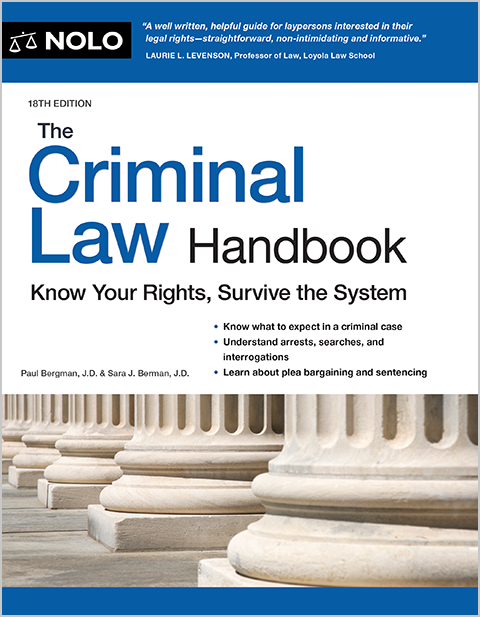You can test out your ability to work while collecting Social Security disability without losing your benefits. Learn how much you can work and when.
Some recipients of Social Security disability insurance (SSDI) are hesitant to work because they're unsure how it will affect their disability payments. While this reluctance is understandable, the Social Security Administration (SSA) has special rules that allow people to continue to receive their full monthly benefit while trying out a part-time or even full-time job.
Social Security gives every SSDI recipient a nine-month trial work period, followed by a three-year extended period of eligibility. Understanding how these periods work before you look for a job will help you make sure you're not jeopardizing the disability payments you need.
What Is the Trial Work Period?
The trial work period (TWP) is designed to allow SSDI recipients to experiment with working while still receiving their full monthly benefit. It consists of a total of nine months, not necessarily consecutive, over a 60-month period. During these nine months, you can earn an unlimited amount of money without lowering your monthly cash benefit. The trai lwork period was developed many years ago to encourage disability recipients to go back to work when they can.
A month counts as a trail work month whenever an SSDI recipient earns more than $1,160 per month (in 2025) or when a self-employed individual (that is, a business owner, freelancer, or consultant) works 80 hours or more in a month.
All of your monthly earnings before taxes apply to the $1,160 TWP threshold, but you can deduct impairment-related work expenses that you pay for out-of-pocket that help you do your job (such as costs related to service animals, medical supplies, or job coaching). Keep receipts of your impairment-related expenses so that Social Security can total your earnings accurately.
You'll need to inform your local Social Security office of your earnings for each month you work while receiving benefits. You can either report your earnings online or send a certified letter with a copy of your pay stubs and any impairment-related work expenses by the 10th of the month after the month in which you work. Failure to report your earnings can result in your benefits' being terminated.
Some SSDI recipients are concerned that working during a trial work period could lead to their benefits being terminated when Social Security conducts a continuing disability review (CDR) While it's possible for a CDR to occur during a trial work period (or at any other time), a TWP by itself is not likely to raise a red flag with Social Security. If you do have a review, Social Security will look at your medical records, but not your trial work, to see if you are still disabled.
What Is the Extended Period of Eligibility?
Once you've exhausted your nine-month TWP, you enter the "extended period of eligibility" (EPE). The EPE is a 36-month period during which you'll continue to receive your full benefit every month as long as you remain disabled and earn less than Social Security's substantial gainful activity (SGA) threshold. In 2025, the SGA level is $1,620 for non-blind individuals and $2,700 for people who are legally blind.
If you earn over SGA in any month during the EPE, Social Security will find that your disability has "ceased." Once that happens, you'll be paid in full for that month, and an additional two-month grace period, before your benefits terminate.
If you later stop working, or your earnings fall below the SGA level during the EPE, contact Social Security and your benefits will be restarted without having to file a new application. Because it's so easy to re-start your benefits if your work attempt doesn't work out, Social Security also calls the EPE the "re-entitlement period."
When the 36-month re-entitlement period ends, your benefits will continue as long as you're medically disabled and not earning SGA. If you earn over SGA for even one month after the 36-month period of re-entitlement, your benefits will terminate. However, if your medical condition makes you stop working again, you might be eligible for expedited reinstatement if it's within five years of your EPE.
Here's an example to help clarify how the TWP and EPE work together.
What Happens to Medicare Coverage During the TWP and EPE?
Medicare coverage comes with SSDI benefits (two years after you become entitled to SSDI). Social Security also has a work incentive program for Medicare, so that you can try going back to work without losing your healh care benfeits.
You can return to work and keep your Medicare benefits for quite a long time, as long as your disability doesn't totally go away due to medical improvement.
Your Medicare will continue during the trial work period (TWP) and extended period of eligibility. At the end of your TWP, you'll remain covered by Medicare for another 93 months, even if you're working and earning SGA during this time. If you remain entitled to disability benefits after your 36-month EPE ends, you can still enjoy Medicare coverage for another 57 months.
What Is the Ticket to Work Program?
If you're an SSDI recipient wanting to work, but you're unable to perform any of your past jobs, you might be eligible for free vocational rehabilitation, schooling, or technical training through Social Security's Ticket to Work program. SSDI recipients who participate in Ticket to Work will be evaluated at a vocational rehabilitation office, where a seven-year plan will be developed for them to try to return to the workforce. As an added incentive, Social Security won't initiate a continuing disability review of an individual who is in the Ticket to Work program.
Rules for Self-Employed SSDI Recipients
For SSDI recipients who work for themselves, either running a small business or making money from a hobby, their income isn't necessarily a good measure of how much they're working.
If you're self-employed, to measure whether you're working too much to continue to be considered disabled, Social Security has come up with some elaborate rules based on how much income you earn, how many people work in the business (if any), and how many hours you work. These rules apply after the trial work period has ended. To learn more, see our article on what counts as SGA for small business owners.

